Altra Outroad
Test Locations: Monument & Colorado Springs, CO
Test Duration: 65 miles
Stated Stack Height (Men’s): 27 mm (heel) / 27 mm (forefoot)
Stated Heel-to-Toe Drop: 0 mm
Stated Features:
- Slim Footshape™ Fit
- Balanced Cushioning™ Platform
- Altra EGO™ foam midsole
- MaxTrac™ outsole rubber
- Zero-drop geometry
Stated Weight: 278 g / 9.8 oz (US Men’s Size 9)
Blister’s Measured Weight: 289 g / 10.2 oz (US Men’s Size 9)
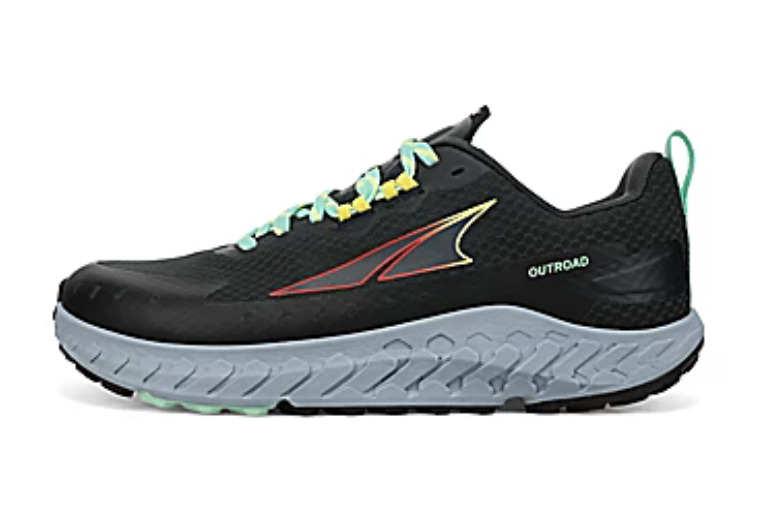
MSRP: $140
Size Tested: US Men’s Size 9 / EU 42
Reviewer: 5’6”, 145 lbs / 168 cm, 65 kg
Intro
Altra Running was one of the first brands to integrate zero-drop geometry and a wide toe box design into their lineup of shoes. Over the years, the brand has been selective about introducing new models to fit specific needs. A great example of this is the 2022 Altra Mont Blanc, a shoe intended to compete as the brand’s first racing-specific, max-cushioned trail model. This year, the brand also introduced the Outroad, designed to be the “gravel bike” of the trail running world, which promised to provide that perfect transition between the tarmac and the trails.As Altra’s first model specifically marketed to provide versatility on multiple surface types, this is a difficult shoe to metaphorically “put into a box.” Like other models belonging to the “hybrid” category, the Outroad takes aspects from both road and trail shoes with the goal of offering high performance no matter what you’re running on. Obviously, many trail runners choose to leverage road shoes both in training and sometimes on race day due to various factors, including comfort and efficiency on smoother surfaces. But could the Outroad provide those things as well as an outsole that won’t have you slipping on varied terrain?
There’s likely hope that the Outroad, Altra’s first true hybrid shoe, will have the same type of transcendent success as their Lone Peak and Olympus lines, both of which are now brand staples. In this review, I’ll discuss whether or not I think Altra is onto something with the Outroad, focusing on how well it blurs the line between a road and trail shoe.
Fit
As with all Altra shoes, and really any shoe in general, I’d highly recommend trying on the Outroad in person.
In 2022, Altra rolled out its fit classification system, with models now appearing in “Original,” “Standard,” and “Slim” lasts, though all of them still feature some take on Altra’s signature “Footshape” toe box. The Outroad falls under the Slim classification, which is the narrowest option offered (there’s not currently an additional “wide” version of the Outroad, like with a few other Altra models).
While the goal of this review is to be as comprehensive and objective as possible, my foot shape / fit preferences will always bias my opinion to a certain extent. As someone who trains and races in a wide range of shoes from various brands, I tend to favor a wider fit and roomy toe box, as well as a softer midsole, and grippy lugs to suit the terrain. The Altra models I have leveraged in the past to suit these needs have been the Lone Peak 6, Olympus 4, and Timp 2.
With that said, some of my favorite training grounds include steep, non-technical fire roads, which are plentiful throughout Colorado and, on paper, would be the ideal terrain for the Outroad. Having gone through multiple pairs of the Timp 2 during my 2020 racing season, and based on the Outroad’s similar-looking profile, I went in with the assumption that the Outroad would be a bit like a more comfortable Timp 2. Turns out, that’s not really the case.

Despite being billed as slim, the Outroad’s toe box is more spacious than what you’ll likely find in other hybrid, road-to-trail models. To me, the Outroad’s fit felt a little foreign and hard to compare to other members of the Altra trail lineup I’ve used, and maybe that was by design. I was way off in my suspicion that the Outroad would fit just like the Timp 2; the Outroad felt quite a bit more narrow than what I remember from my time in the Timp 2. The Outroad’s wide toe box is still signature Altra though, and I was pleasantly surprised by the comfort of the EGO midsole. Though the shoe shares EGO midsole material with the Lone Peak 6, I had figured its road influences would take away from my ability to comfortably hammer down steeper grades. In this case, I was happy to be proven wrong, as the Outroad did a nice job of softening the impact I felt while descending. All in all, the Outroad felt more like a low-profile trail shoe than a road shoe with aggressive lugs, which, as someone who spends a ton of time on trails, complemented my running style.
The sizing, however, is off with this shoe. I’ve heard others argue that Altra’s sizing runs too small by about a half size. I had the opposite issue; I felt the Outroad ran about a half size too large. I had difficulty locking the shoe down to a snug fit, especially in the heel, where I found my foot wanting to slide out. As someone who’s consistently been happy with a US Men’s Size 9, I felt as though a half-size smaller would have suited me better. This was the first time I experienced this issue with an Altra shoe; most of their shoes that I’ve tried have felt true to size.
With 27 mm of stack height, the Outroad weighs in at 10.2 oz for a US Men’s Size 9, landing it squarely in the middle of shoes I’d consider in the same class, from a cushioning / use standpoint. The Outroad could definitely be lighter; reducing the stack height by a few millimeters and swapping out its thick upper for thinner materials would put it more in line with typical road-to-trail shoe design anyway. That said, the Outroad does distribute its weight well, something that I’ve noticed in most Altra shoes and I suspect has a lot to do with their balanced zero-drop geometry. For a more direct comparison, here’s how the Outroad’s weight stacks up to a few similar shoes from other brands (all stated weights are based on a US Men’s Size 9):
240 g / 8.5 oz — Hoka Zinal
264 g / 9.3 oz — Brooks Catamount
278 g / 9.8 oz — Hoka Challenger ATR 6
283 g / 10 oz — Arc’teryx Norvan LD 3
289 g / 10.2 oz — Altra Outroad
295 g / 10.4 oz — On Cloud Ultra
298 g / 10.5 oz — New Balance Fresh Foam X 880v12
301 g / 10.6 oz — Adidas Runfalcon 2.0
303 g / 10.7 oz — Altra Timp 4
Upper
The Outroad’s upper is a little different from other Altra models. For one, it features a comfy rip stop mesh, which contributes to the shoe’s overall “plush” feel. This material provides great structure and comfort at the expense of some additional weight. The rip stop upper is supplemented by TPU overlays along the toe rand, which add some protection in a nod to the Outroad’s trail running side.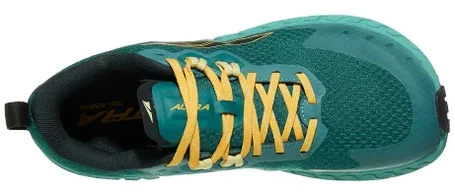
Midsole
Even though the Outroad has the same midsole compound as the Lone Peak 6, its ride feels both significantly softer and more lively, the latter being a characteristic I felt was missing from the Lone Peak 6. I was originally a bit apprehensive before trying this shoe, seeing as it lacked Altra’s premium EGO MAX foam present in the Mont Blanc and Timp 4, among others. However, I found that the Outroad’s standard EGO foam provided enough cushion and ground feel for what I felt to be high-level performance on non-technical gravel roads and singletrack trails. Altra marketed EGO foam as, literally, the “holy grail of running shoe cushioning” as far back as 2016, and while I can’t necessarily endorse that claim, I will say that the Outroad’s midsole is the shoe’s best feature, in my opinion.
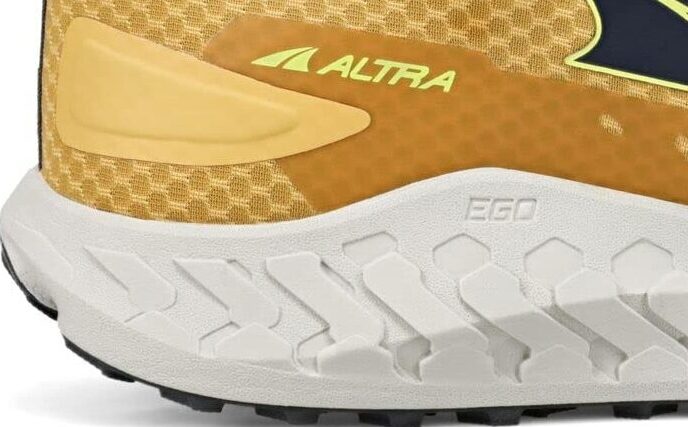
Outsole
The Outroad comes equipped with Altra’s proprietary “MaxTrac” outsole, the same setup leveraged on the Timp 4, Lone Peak 6, and Superior 5. Altra bills this compound as one that provides grip, traction, and durability on all terrains, yet it’s replaced in favor of Vibram Megagrip rubber on both their Olympus line and recently released Mont Blanc. I was a bit dismayed not to see Vibram on the bottoms of my Outroad, but as a hybrid shoe that will likely spend a good deal of time on the roads, stickier rubber might just go to waste.
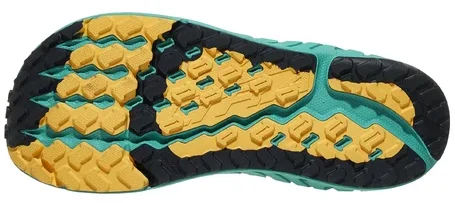
The majority of miles I put on the Outroad were from my front door to steep, granite gravel roads nearby. After spending a good deal of time beating up the shoe by finding the steepest and most arduous non-technical trails I could in my area, I found its outsole to offer adequate traction while remaining pretty durable. The eroded granite gravel found on Colorado Springs’ trails are notorious for chewing up outsole lugs quickly. However, just like my experience running in the Lone Peak 6, the Outroad’s MaxTrac rubber took significant time to begin to show signs of wear, even with a more minimal lug profile I’d categorize as closer to the Timp 4’s.
On one occasion while climbing Longs Ranch Road — which has about a 13% grade, mind you — I noticed the Outroad’s outsole start to slip, struggling to find grip at such a severe angle. I also had some inconsistency descending in the shoes, frequently spinning out on turns if I picked up too much speed. For all that, the Outroad did hold its own on flat terrain with finer gravel. On Colorado Springs’ Santa Fe Trail, the shoe’s outsole performed exceptionally well, which makes sense considering this shoe’s sweet spot is smooth, packed-out singletrack. All in all, I enjoyed pretty much everything about the Outroad from the midsole down.
On Trail
Simply put, I had a lot of fun in this shoe. As Altra’s first true hybrid model, I wanted to really put the Outroad to the test. Overall, despite my issues achieving the amount of lockdown I’m accustomed to, especially in the heel, I would feel comfortable taking the Outroad on some of Colorado Springs’ less challenging trails. Given its versatility and price point ($140), I’d argue that it could be a worthy addition to any runner’s shoe rotation if used the right way.
For example, trail runners coming to the Outroad could get the most out of it as an option for weekday runs approaching 10 miles on mellow town trails, maybe even incorporating some speed work on the road if that’s what the training plan calls for. Even though Altra markets the Outroad as a hybrid, it definitely skews more toward performance on trails rather than pure pavement miles, and that’s reflected in its weight and the way it handles. My personal use for this shoe is very much in line with what’s described above; I frequently reached for the Outroad for easy efforts through the smooth trails at Garden of the Gods and everyday aerobic work on flat trails close to home.
For more technical terrain, options within Altra’s line like the Lone Peak 6 and Olympus 5, probably make more sense. Unlike the Outroad, the Lone Peak features a full-length rock plate and deeper lugs, which will likely give it better protection and traction on trails studded with sharp rocks. The Olympus 5, Altra’s highest stack trail shoe, defends feet from debris by virtue of its thick midsole, and its Vibram MegaGrip outsole should offer as good if not better purchase than MaxTrac. As for more road oriented models that share a resemblance to the Outroad, the Torin 6 lines up the closest. As Altra’s best selling and most versatile road shoe, it’s designed to handle a ton of miles. It also shares a similar geometry with the Outroad, but should fit slightly wider and offer better energy return on pavement because of its livelier EGO MAX midsole foam. The Outroad comes in when you want to split the difference between these two extremes. Its MaxTrac outsole provides confidence on singletrack and doesn’t scuff on the roads like most dedicated trail shoes do, and its snug fit and moderate cushioning allow for a precise, energetic ride when dirt turns to pavement.
Durability
While I initially struggled with the Outroad’s fit, I never once questioned its durability, especially in areas like the outsole and upper. While MaxTrac is no Vibram MegaGrip when it comes to tackiness on slick surfaces, it held up well against the abuse I put the shoe through. And the rip stop mesh that makes up the majority of the Outroad’s upper still looks unblemished and creaseless after nearly 70 miles (so far).

My main concern related to the shoe’s long-term durability has to do with how vulnerable the padding along the heel counter appears to be. This zone is under constant stress and the material Altra uses feels soft and somewhat fragile. If I had to bet, tearing / fraying in this area will likely be why I will eventually have to retire this shoe. I’m also curious as to when the energy return from the EGO midsole will start to diminish, since it’s by far the Outroad’s most redeeming quality, in my opinion. Considering how it’s performed so far though, my expectations are sky high.
As always, if I notice anything unusual as I keep running in this shoe, I’ll update this section.
Who’s It For?
Altra argues that this shoe is the “gravel bike” of the running world, and when thinking about my own gravel bike, I can understand the comparison. I’m not often working my way up technical ascents or bombing 13% downhill grades on my gravel bike, but rather enjoying long, gradual, non-technical routes through mountain valleys and/or peddling on flat terrain. The same line of thinking can be applied to the Outroad.
While it’ll handle roads just fine, you get the sense from running in it that it really wants to sniff out the closest dirt. Moving forward, I plan to use this shoe as an option for consistent, easy runs on non-technical terrain and, as I alluded to earlier, the occasional speed workout on something comparable to a bike path. This shoe will likely provide the comfort needed on that trip to the trailhead and on the trail itself, provided you keep in mind the compromises you make on either end of the spectrum, relative to more specialized shoes. It probably won’t win any races, but it could serve its purpose in helping you prepare for them.
Bottom Line
I think Altra is on to something with the Outroad. This iteration is an important first step in evolving this subcategory of hybrid shoes that could be leveraged both on roads and trails. While the Outroad leans trail, I would love future iterations to be just as versatile on the roads, where some of the clunkiness found in the upper could be streamlined. The rest of the Outroad lives up to Altra’s reputation as an industry leader in the trail shoe space. Its EGO midsole is extremely comfortable and provides a stable ride on easy terrain, and its MaxTrac outsole performs as advertised on everything but the most technical of trails. If you can’t tell, I’m genuinely excited about this model’s future in Altra’s expanding lineup. If you’re looking for the “gravel bike” of trail shoes, check out the Outroad.


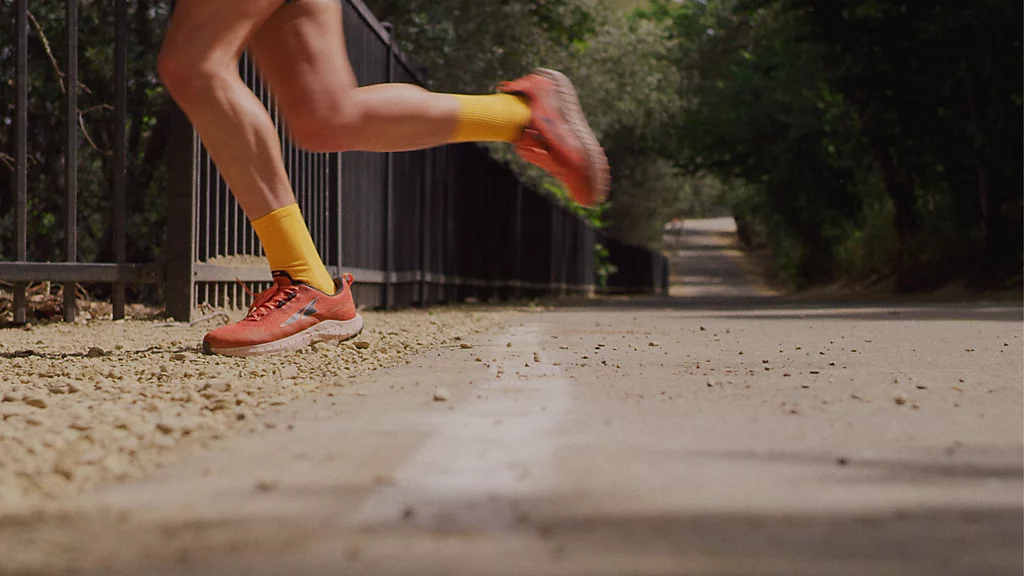

Great review!
Thanks for the great detailed review. Very thorough and complete.
Excellent review! I hadn’t even heard of the Altra Outroad until I called Fleet Feet yesterday and the woman there was quite the fan. I plan on walking the Camino Portuguese in September and I’m on the fence on whether I want to use the Altra Outroad, Timp 4 or Lone Peak. I have wide, flat feet and will be walking approx 165 miles on cobblestone and dirt roads. I’ll be carrying a pack that weighs 15-16 pounds. Any recommendations on which Altra would work best, is greatly be appreciated!